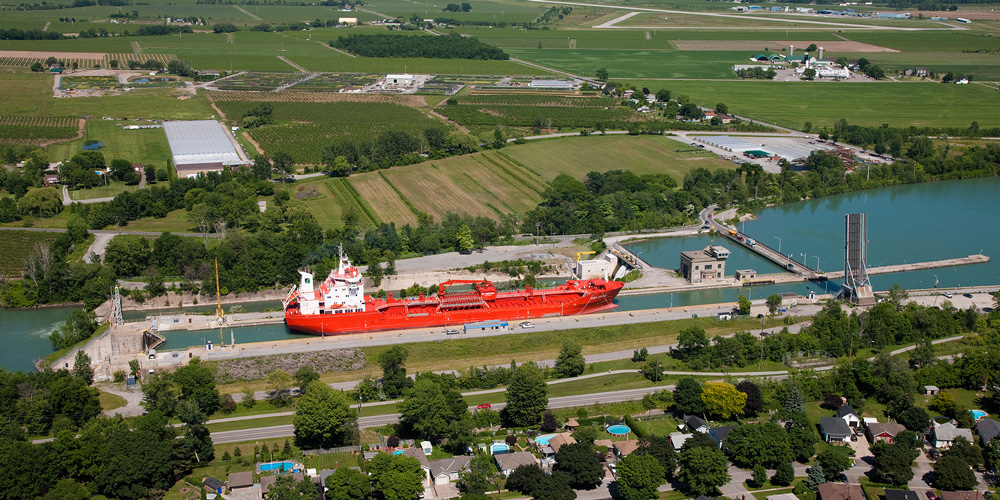Welland Canal Opens For Business Today
March 21, 2006
St. Catharines, Ont., March 21, 2006 — Captain Stephan Muzyka of the Sea Eagle II / St. Mary’s Cement II, owned by St. Mary’s Cement Corporation, was presented with the ceremonial top hat at Lock 3 this morning when the Welland Canal officially opened for its 177th year of service. Loaded with 16,000 tonnes of cement and bound for Detroit, the transit of the Sea Eagle II / St. Mary’s Cement II marks the first time an integrated tug and barge unit has opened the Welland Canal. It reflects the increased attention being paid to short sea shipping vessels, such as tug and barge combinations and smaller ships.
This year’s opening date also establishes a new record for the earliest opening of the Welland Canal. The opening date is the result of careful planning and coordination by the Seaway’s engineering staff and will allow Seaway shipping clients to get a “head start” on the shipping season. The Montreal-Lake Ontario section of the canal will open on March 23.
“In 2005, overall tonnage on the Seaway remained steady at 43.5 million tonnes, while vessel transits increased by approximately 250” said Michel Drolet, Vice-President of the St. Lawrence Seaway Management Corporation, Niagara Region. “We were very pleased with the results of the flexible toll structure program which was introduced in 2005 to encourage new cargo on the Welland Canal. It succeeded in attracting over 215,000 tonnes of additional cargo to the system, most of which was shipped on smaller size vessels.”
At the ceremony, Mr. Drolet was joined by Rick Dykstra, MP for St. Catharines, Bruce Timms, representing Regional Chair Peter Partington, Susan Erskine, Deputy Mayor of St. Catharines, and other elected officials. Mirek Gassowski, President of Fettes Shipping which manages and operates the tug and barge units for St. Mary’s Cement Corporation, was also in attendance.
Momentum is building behind short sea shipping as a means to deal with congested land based arteries. The Seaway’s Hwy H2O campaign, entering its third season, highlights the potential that the marine mode offers in complementing existing road and rail intermodal networks. Feeder ships, shuttling cargo to inland ports where final delivery is made via truck or rail, provide an effective means of relieving choke points and clogged border crossings.






